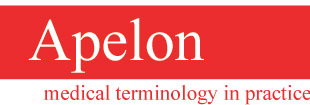| Objectives | Approach | Partners | Funding | |
Objectives |
|
|||
Our objective is to develop technologies with which medical experts can author and encode guidelines in a standard, computable, electronic format, and healthcare organizations throughout the nation can deploy those guidelines easily within any standards-conforming clinical information system (CIS). If we are successful, care delivery organizations will be able to download proven guidelines, import them into their local clinical information systems (CISs), and activate guideline logic and content via existing functions of the host CIS.
-
An interoperable guideline model
A computable knowledge representation "format" for encoding the content and logic of executable clinical practice guidelines. -
A guideline workbench
A software tool for authoring, encoding, and maintaining guidelines in the format of the SAGE guideline model. -
A guideline deployment system
Software that "decodes" the content of electronic guidelines and surfaces that content via functions of the local clinical information system. -
Controlled resources
Specification of a common layer of information models and terminologies to mediate guideline content.
- Represent guideline knowledge in a manner that is both comprehensive and computable.
- Manage complexity during encoding and deployment.
- Activate guideline content via functions of clinical information systems.
Interoperability
- Deploy encoded guideline content widely.
- Semantic interoperability – sharing usable knowledge.
- Install and “map” guideline content at reasonable costs.
- Execute guideline content in multiple HIS environments.
| Objectives | Approach | Partners | Funding | |
Approach |
|
|||
The SAGE Project is a large scale, five-year (2002-2006) initiative, funded in part by an award from the U.S. Department of Commerce National Institute of Standards and Technology (NIST) Advanced Technology Program (ATP). To accomplish our goals, we have formed a multi-faceted partnership between industry, academic centers, and health care delivery organizations to provide a necessary aggregate of expertise in guideline modeling science, clinical excellence, health care quality improvement, and medical informatics.
Our approach is to build on a valuable foundation of existing research
in guideline modeling and knowledge representation science. In pursuit
of our technical objectives, we will employ (and extend where necessary),
the best available informatic standards and controlled terminologies,
via close collaboration with standards development efforts, such as
HL7, LOINC, and SNOMED.
Throughout the project, we employ a requirements-driven methodology,
using clinically valid exemplars of guidelines as use cases in "end-to-end"
(encoding through execution) prototyping and testing cycles. Our exemplar
guidelines include: Diabetes Management; Immunizations (Childhood and
Adult); and Community Acquired Pneumonia.
The main organizing process framework for the SAGE Project is the "synchronization
cycle", in which periodically the latest working prototypes of
all development components are used in a formal exercise of as much
interoperable functionality as possible at that point in time. The main
steps in each synchronization cycle are:
- Identify requirements based on selected exemplar guidelines.
- Define clinical scenarios -- opportunities for guideline interaction with care workflow (e.g., check newborn admission for immunization recommendations).
- Assess usability requirements for interjecting guideline-driven advice into the care workflow (e.g., how best to surface guideline content to clinical users).
- Identify and implement guideline model structures (e.g., decision models, action models), required to encode identified requirements.
- Encode guideline content to support the clinical scenarios defined.
- Specify guideline-driven actions (e.g., alerts, reminders) required in the host CIS.
- Update SAGE deployment components to support guideline-driven actions.
- Install update SAGE components and guideline encodings into test CIS systems for evaluation.
A fundamental principle and differentiator of the SAGE project is that if guidelines are to have impact, they must be integrated into functions that clinicians find useful in the routine care of patients. For this reason, active deployment of guideline content within the native workflow of CISs is an integral part of the SAGE solution. During execution, the SAGE Guideline Engine will "translate" guideline content into interactions with many different components of the host CIS. (Examples of such interactions include: Presenting alerts or reminders to a clinician, queuing up a pre-defined set of orders, obtaining and evaluating patient-specific EMR data, or making a guideline-driven updated to the patient's medical record). Within this infrastructure, clinicians will not interact directly with SAGE technology, rather, they will received SAGE-determined clinical guidance via functions of the CIS that supports their day-to-day care delivery.
| Objectives | Approach | Partners | Funding | |
Partners |
|
|||
| GE Healthcare |  |
| Apelon, Inc. |  |
| Intermountain Healthcare |  |
| Stanford University School of Medicine |  |
| The Mayo Clinic |  |
| University of Nebraska Medical Center |  |
| Objectives | Approach | Partners | Funding | |
Funding |
|
|||
The SAGE project is partially funded by an award from the The National Institute of Standards and Technology (NIST), Advanced Technology Program (ATP). NIST is an arm of the U.S. Department of Commerce.
The mission of the ATP program is “To accelerate the development of innovative technologies for broad national benefit through partnerships with the private sector.”
The ATP program specifically funds “high risk” research in all areas of technology, with the stipulation that this research shows substantial promise of leading to significant national benefits.

 top
top